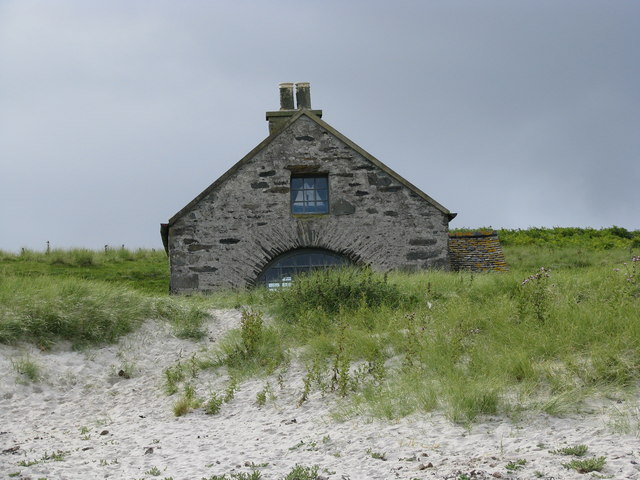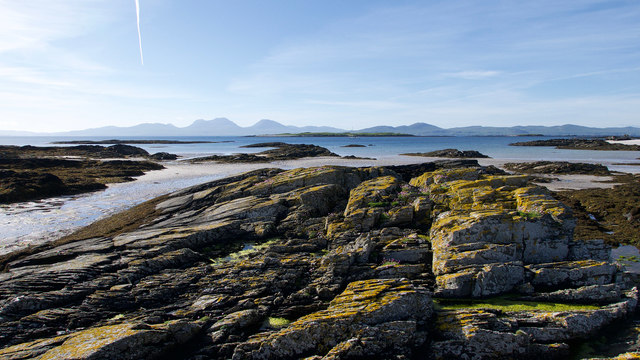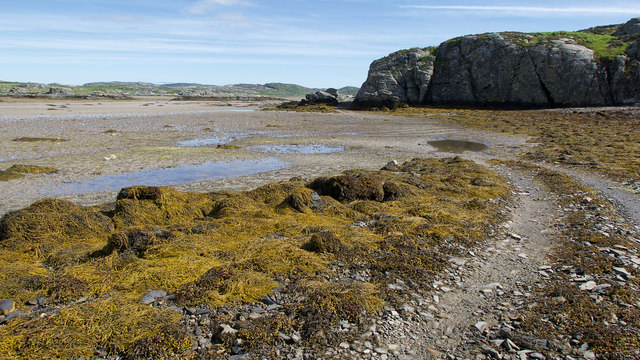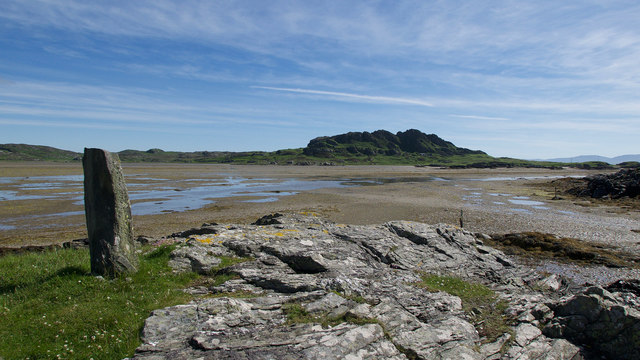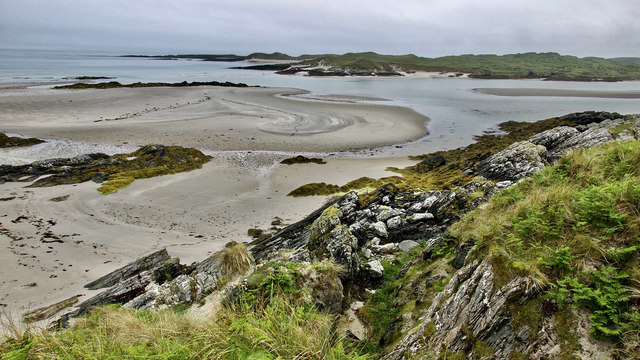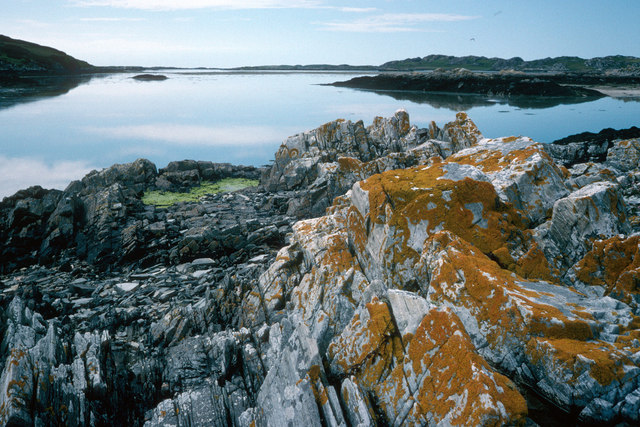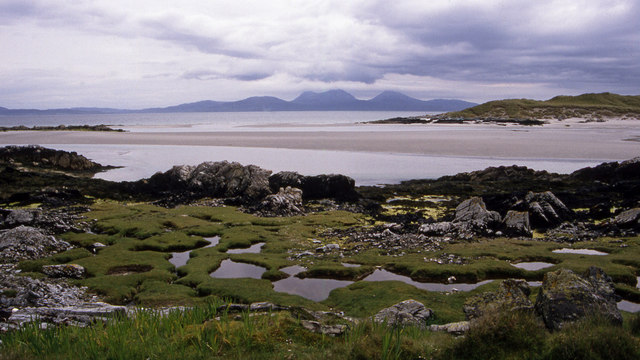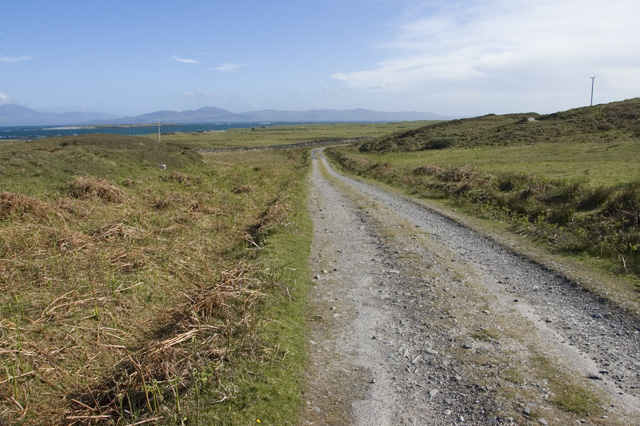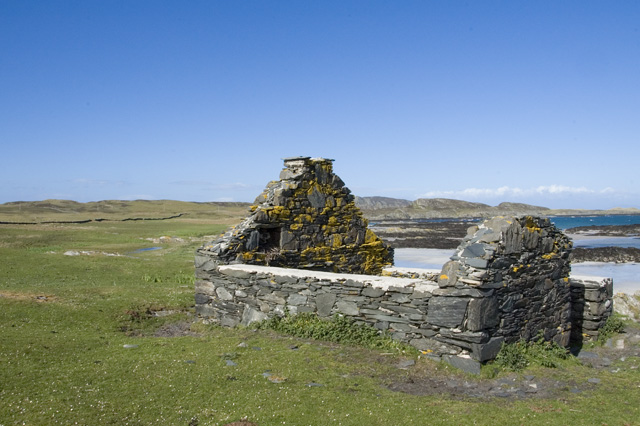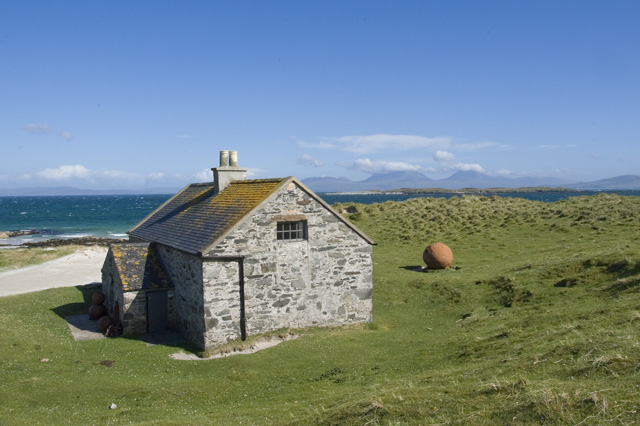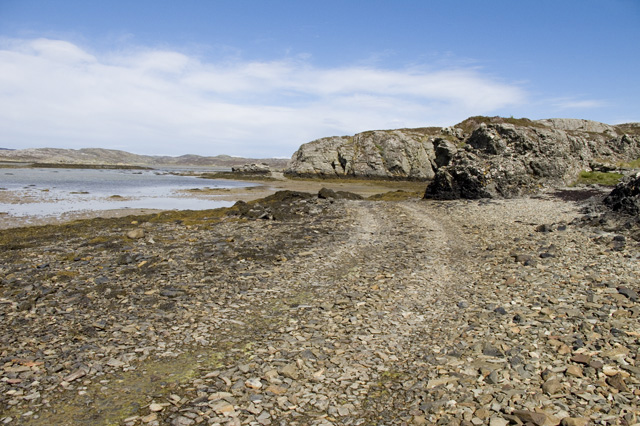Leac Bhuidhe
Coastal Feature, Headland, Point in Argyllshire
Scotland
Leac Bhuidhe

Leac Bhuidhe is a stunning coastal feature located in Argyllshire, Scotland. Situated on the western coast, it is a prominent headland that extends into the vast Atlantic Ocean. The name "Leac Bhuidhe" originates from the Gaelic language, translating to "yellow slab" in English, which aptly describes the distinctive yellowish rock formations found in the area.
This headland boasts magnificent cliffs that rise dramatically from the sea, reaching impressive heights. The rugged terrain is composed of ancient rocks, primarily sandstone and limestone, which have been shaped by the relentless forces of wind and waves over countless millennia. These forces have sculpted the cliffs into awe-inspiring formations, with their jagged edges and deep crevices adding to the allure of this natural wonder.
Leac Bhuidhe is known for its breathtaking panoramic vistas, offering sweeping views of the surrounding coastal landscape and the vast expanse of the Atlantic Ocean. On clear days, visitors can even catch a glimpse of neighboring islands such as Islay and Jura, enhancing the enchanting experience.
The headland is a haven for wildlife enthusiasts, as it provides a habitat for a diverse range of species. Seabirds, including gannets, puffins, and guillemots, can be observed nesting and soaring above the cliffs. Additionally, seals and occasionally dolphins can be spotted in the waters below, adding to the area's natural charm.
Leac Bhuidhe is a popular destination for hikers and nature lovers, who are drawn to its rugged beauty and tranquil surroundings. Visitors can explore the coastal paths that wind along the headland, offering a chance to immerse themselves in the stunning scenery and immerse themselves in the rich natural heritage of this remarkable coastal feature.
If you have any feedback on the listing, please let us know in the comments section below.
Leac Bhuidhe Images
Images are sourced within 2km of 56.01581/-6.2098237 or Grid Reference NR3788. Thanks to Geograph Open Source API. All images are credited.
Leac Bhuidhe is located at Grid Ref: NR3788 (Lat: 56.01581, Lng: -6.2098237)
Unitary Authority: Argyll and Bute
Police Authority: Argyll and West Dunbartonshire
What 3 Words
///flocking.lyricism.inherit. Near Scalasaig, Argyll & Bute
Nearby Locations
Related Wikis
Oronsay, Colonsay
Oronsay (Scottish Gaelic: Orasaigh), also sometimes spelt and pronounced Oransay by the local community, is a small tidal island south of Colonsay in the...
Dùn Cholla
Dùn Cholla is a hill fort located on the Inner Hebridean island of Colonsay, Scotland. The site is located at grid reference NR37759150.According to tradition...
Oronsay Priory
Oronsay Priory was a monastery of canons regular on the island of Oronsay, Inner Hebrides, Argyll, off the coast of Scotland. It was in existence by 1353...
Ardskenish
Ardskenish is a hamlet on the island of Colonsay, in the civil parish of Colonsay and Oronsay, in the council area of Argyll and Bute, Scotland. ��2�...
Have you been to Leac Bhuidhe?
Leave your review of Leac Bhuidhe below (or comments, questions and feedback).

